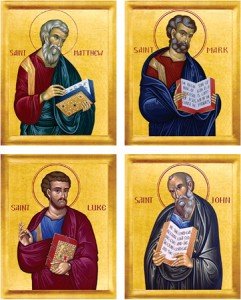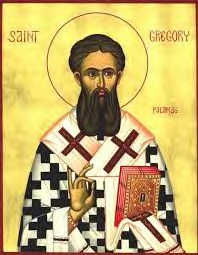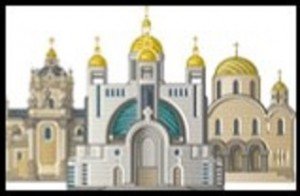TOPIC: FIRST SERMON Synoptic Gospels
By Len Mier
Transfiguration
TOPIC: Transfiguration of Christ as presented in St. Matthew’s Gospel (17:1-3)
Every year the Church celebrates this great feast of the transfiguration of Christ, one of the twelve great feasts of the Church. A feast that reveals to us something about our own salvation, we are presented with the transfiguration account as told in St. Matthew’s gospel.
I find it not to be overlooked that Matthew begins with the phrase, “After six days Jesus took Peter, James and John, his brother, and led them up a high mountain by themselves. What happened six days prior?” Matthew seems to want us to be aware of a specific frame of time. Numbers played a role in Jewish understanding of the cosmos. Why is it important that Matthew tells us six days passed? What does this miraculous event mean for us in our lives?
We have to look back to the previous chapter of Matthew’s gospel to find out why this mention of six days is important to the telling of the transfiguration account, and why it is important to our own understanding about Jesus. Let us look back in the gospel of Matthew to hear Jesus asking the twelve a question that Christians still ask themselves today: “Who do people say that the Son of Man is?” We need to remind ourselves that Matthew was writing to an audience that was primarily of Jewish origin. For them the term “Son of Man” had messianic overtones. For them the messiah was to be a person who restored the earthly kingdom of the people of Israel. The answers varied from the twelve. So Jesus probes his disciples further. Having lived with them and taught them in word and deed, Jesus does on to ask them more specifically: “But who do you say that I am?” to which Peter gives his confession “You are the Messiah, the Son of the living God.”
As if starting a timer Matthew starts counting. Where else do we encounter this time frame? It is the same time frame as the writing of the creation narrative in the Book of Genesis. On the first day of creation we hear the revelation that God makes His presence known to this world He is creating, by showing his presence with that of light, “Let there be light, and there was light.” This idea of six days of creation I think spoke to the mind of the early Jewish followers of Christ. A great revelation of light is God’s presence made manifest. We see the creation narrative moving in time through to the sixth day. The last day of creation is the summit of all that God wanted to create. This first creation ends with“ Let us make human beings in our image, after our likeness.”
Peter saying, “You are the Messiah” about Jesus is as great a revelation to the other disciples who are probably expecting the messiah to be the warrior king, giving Divine order and displacing the chaos of their world, just as the creative revelation of God’s divine light displaced the darkness of chaos. They start to realize at this moment that Jesus was not the warrior political kingdom restorer Messiah main stream Judaism of the day wanted. We see that Matthew now progresses full force forward this event of the transfiguration. All the gospel accounts take Peter, who made the profound confession, along with James and his brother John, to this event. It is here on the height of creation that this miraculous event takes place.
Matthew tells us Jesus was transfigured before them and that appearing with him are Moses, the first law giver, and Elisha, the greatest of Israel’s prophets. The evangelist tells us Jesus’ face shone like the sun and his clothes because white as light, and we hear the voice of the Father reaffirming Peter’s confession to the three, “This is my beloved Son.” Our icon of this great feast gives us glimpse of what this event looks like to the believer. If we compare it to the icon of the Lord’s resurrection we can see that the transfigured Jesus is depicted with the same glorious mandorla, the uncreated eternal light of the resurrected Christ.
Is Matthew trying to tell us that this transfiguration happening six days post proclamation by Peter that Jesus is the messiah, the culmination of a new creation in Christ? Yes, I think Matthew is revealing to us a completion of the new creation, the fact that Jesus is the perfection of creation, and that the resurrected Jesus will be the first born of this new creation.
Now comes the difficulty with reading about this miraculous event, what does this miraculous event mean for us in our lives?
In order for this passage of scripture to be relevant to a modern Eastern Christian we have to go beyond basking in the glow of light from the miracle of the manifestation of Jesus on the mountain. I think that we must take away from the account of the transfiguration, that in baptism we too have become a new creation, if we truly take on Christ. His presence with Moses, the first law giver, he is also a new law giver. Giving us the law, “Love one another as I have loved you.” His presence with Elijah, he is also the new and greatest of prophets, in that he shows to us truly what God’s will is. In accepting this new creation for ourselves we need to see that the spark of Divine light is within us. We need to nurture and grow this Divine light dwelling with in us, until it busts forth from us We need to make manifest this Divine light for not only those close to us to see but make it shine for the whole world to see in us.
***************
As you think about the transfiguration of Our Lord,
which you have heard about many different times, what message does it have for you? The events in the life of Christ are all meant to reveal something to us that can help us live our present lives. The icon of the transfiguration is the icon that the Eastern Church uses to convey a message to us about the meaning and purpose of our lives. What is that message, as you understand it? Go back and reread Matthew’s account of this event and reflect on the message it has for you!

 As I shared in the last issue of this article, the Pauline letter were written before the Gospels. It is difficult to be certain when the earliest pre-Gospel traditions were written down. It seems reasonable to place in the 50’s some of the works that modern scholars suppose to have antedated the Gospels (e.g., “Q”, proto-Mark, the earliest written tradition behind John). In antiquity Papias knew of a collection of the sayings of the Lord in Hebrew or Aramaic complied by Matthew and Irenaeus states that this material antedated Mark. By the time that Luke was writing (in the 80’s?), many others had undertaken to compile a narrative of all the things that had been accomplished by Jesus. Such pre-Gospel written sources, now lost by theoretically reconstructed by scholars, must have already shown considerable development over the words and acts of Jesus. They would have constituted a trustworthy record of the memories of Jesus as preserved in the Christian communities of the 50’s, but scarcely a verbatim report of what had been said and done in the 20’s.
As I shared in the last issue of this article, the Pauline letter were written before the Gospels. It is difficult to be certain when the earliest pre-Gospel traditions were written down. It seems reasonable to place in the 50’s some of the works that modern scholars suppose to have antedated the Gospels (e.g., “Q”, proto-Mark, the earliest written tradition behind John). In antiquity Papias knew of a collection of the sayings of the Lord in Hebrew or Aramaic complied by Matthew and Irenaeus states that this material antedated Mark. By the time that Luke was writing (in the 80’s?), many others had undertaken to compile a narrative of all the things that had been accomplished by Jesus. Such pre-Gospel written sources, now lost by theoretically reconstructed by scholars, must have already shown considerable development over the words and acts of Jesus. They would have constituted a trustworthy record of the memories of Jesus as preserved in the Christian communities of the 50’s, but scarcely a verbatim report of what had been said and done in the 20’s. Gregory admits that if God does not possess a body, then God must be “incorporeal.” The term incorporeal “does not yet set before us – or contain within itself – his essence.” Neither do other terms such as unbegotten, unoriginate, unchanging, incorruptible or “any other predicate which is used concerning God or in reference to him. For what effect is produced upon his being or substance by his having no beginning and being incapable of change of limitation?” Other human predicates we sometimes employ, such as “corporeal, begotten, or mortal,” fall short unless one “clearly and adequately” describes the subject to which they apply. All, for example, could equally apply to “a man, or a cow, or a horse.”
Gregory admits that if God does not possess a body, then God must be “incorporeal.” The term incorporeal “does not yet set before us – or contain within itself – his essence.” Neither do other terms such as unbegotten, unoriginate, unchanging, incorruptible or “any other predicate which is used concerning God or in reference to him. For what effect is produced upon his being or substance by his having no beginning and being incapable of change of limitation?” Other human predicates we sometimes employ, such as “corporeal, begotten, or mortal,” fall short unless one “clearly and adequately” describes the subject to which they apply. All, for example, could equally apply to “a man, or a cow, or a horse.” I have shared the thought, in another article in the last Bulletin, that PRAYER must be an ENCOUNTER with God – must be an experience of the existence of the God. This experience, however, can only take place when we are willing to enter into a relationship with God.
I have shared the thought, in another article in the last Bulletin, that PRAYER must be an ENCOUNTER with God – must be an experience of the existence of the God. This experience, however, can only take place when we are willing to enter into a relationship with God. Our readings for this great feast of Pentecost are again taken from the Acts of the Apostles and from John’s Gospel. The reading from Acts recounts the actual occasion of the Descent of the Holy Spirit on the Apostles and the impact of that event. The reading from John’s Gospel relates two episodes of Jesus teaching during the days of the Feast of Booths (Sukkot).
Our readings for this great feast of Pentecost are again taken from the Acts of the Apostles and from John’s Gospel. The reading from Acts recounts the actual occasion of the Descent of the Holy Spirit on the Apostles and the impact of that event. The reading from John’s Gospel relates two episodes of Jesus teaching during the days of the Feast of Booths (Sukkot).
